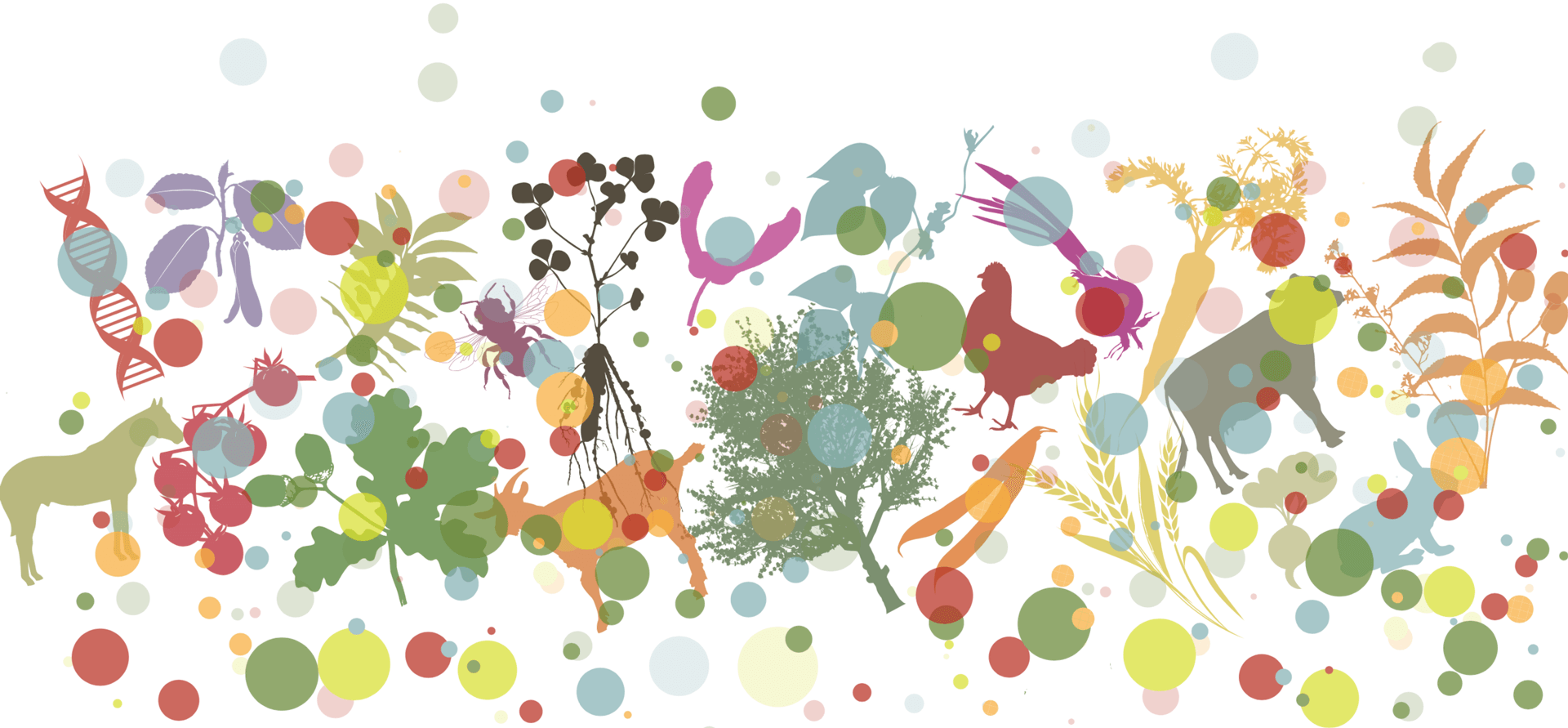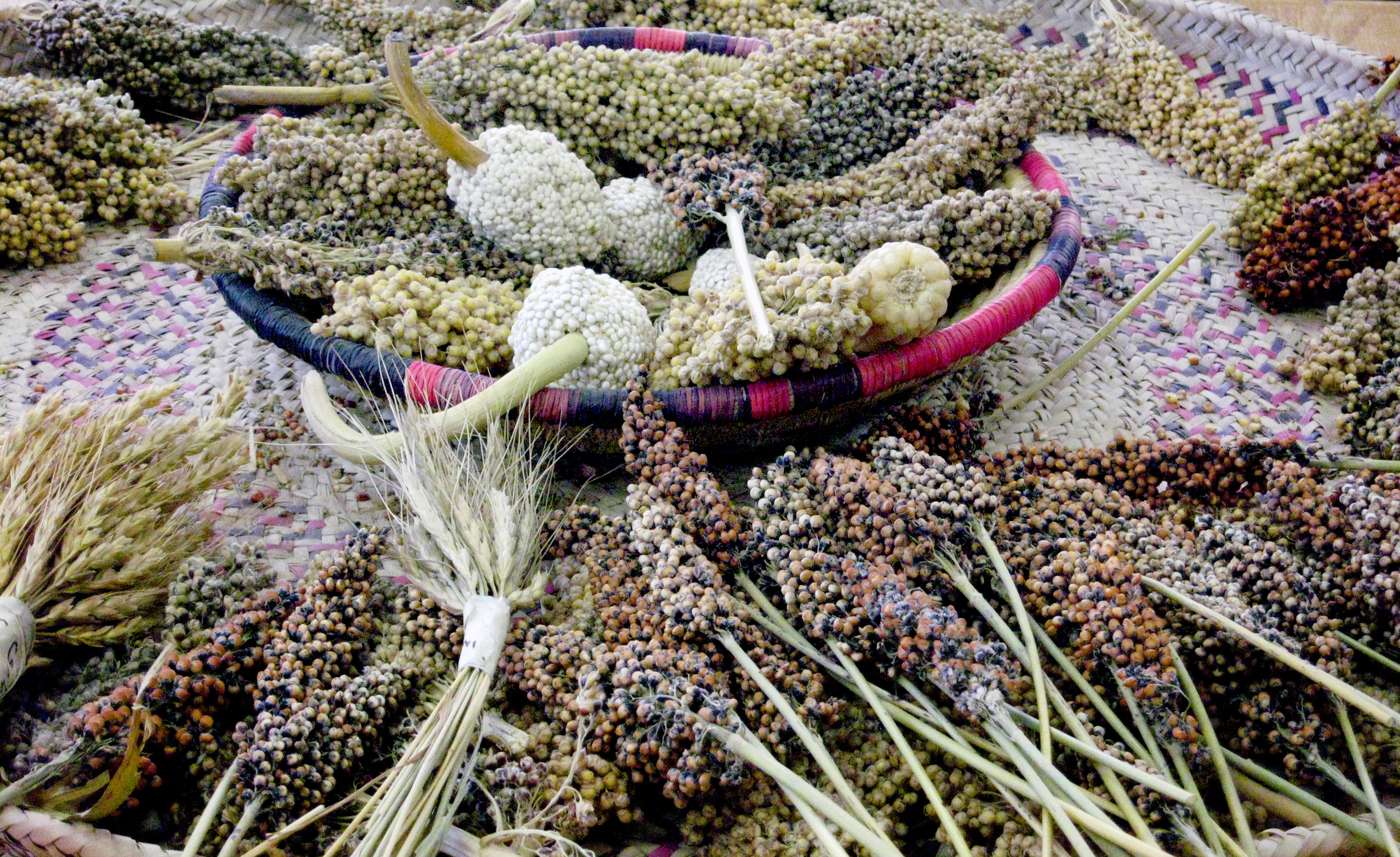Status and prospects of plant genetic resource conservation in Yemen
Main Article Content
Abstract
This study provides a comprehensive examination of the conservation status of plant genetic resources in Yemen, with a particular focus on the national genebank, natural sites and field genebanks. Employing a historical and descriptive approach, the study sheds light on the inception of field inventories and collection surveys, the roles and contributions of various projects and institutions since the late 1980s, and the quantities of seed samples collected from different crop varieties and species. Additionally, the study highlights the challenges faced, especially during the last decade following the eruption of war in early 2015. Specifically, it emphasizes the detrimental impact of the war and sanctions, resulting in the loss of conserved seed samples, and the damage and sabotage of field genebanks. In contrast, there is a need to ensure the enhancement of functioning seed systems and agriculture production even during times of conflict to reduce the impact of food insecurity. To conclude, the study puts forth several proposals, with a strong emphasis on expanding conservation efforts beyond natural sites, enhancing the capabilities for seed conservation in genebanks, and building genetic resources capacity.
Article Details

This work is licensed under a Creative Commons Attribution 4.0 International License.
Authors retain copyright of the articles published in Genetic Resources and grant the journal right of first publication with open access. All articles published in Genetic Resource are licensed under Creative Commons Attribution 4.0 International License (CC BY 4.0) that allows others to download, share and adapt the work for commercial and non-commercial purposes as long as proper attribution to the original article is given. Genetic Resources permits and encourages authors to post items submitted to the journal (including the publisher's final layout) on personal websites or institutional repositories after acceptance and/or publication, while providing bibliographic details that credit their publication in Genetic Resources.
Alafif Cultural Foundation (2003). The Encyclopedia of Yemen: The old history of Yemen. Sana’a, Yemen.
Amer, H M and A Al-Dahmashi (1997). “The Status and Future of the Genetic Resources Activities”. In: Proceedings of the First National Workshop on Plant Genetic Resources. Ed. by A Jaradat. Aleppo, Syria: International Genetic Resources Institute, pp. 33–43.
AREA (2013). The AREA’s Annual Report for 2012. Dhamar, Republic of Yemen: Agricultural Research and Extension Authority (AREA).
AREA (2014). The AREA’s Annual Report for 2013. Dhamar, Republic of Yemen: Agricultural Research and Extension Authority (AREA).
AREA (2015). The AREA’s Annual Report for 2014. Dhamar, Republic of Yemen: Agricultural Research and Extension Authority (AREA).
AREA (2021). The AREA’s Annual Report for 2020. Dhamar, Republic of Yemen: Agricultural Research and Extension Authority (AREA).
AREA (2022). A Road Map of the Agricultural Research Programs and Projects (2022-2026). Sana’a, Yemen: Agricultural Research and Extension Authority (AREA), MAI, pp. 2022–2026.
Bawazir, A A (2004). “Biological Variation in the Genetic Resources of Cereal Crops Grown in the Southern Region of Yemen”. The Yemeni Journal of Agricultural Research and Studies, issue 11, pp. 119–132.
Bazara’a, A (2000). “Efforts Made to Preserve the Socotra Pomegranate Plant Outside its Natural Habitat”. The Yemeni Journal of Agricultural Research and Studies 3, pp. 96–107.
Ceccarelli, S (2002). Village-Based Participatory Breeding in the Mountain Slopes of Yemen. Aleppo, Syria: ICARDA. URL: https://hdl.handle.net/10568/76968.
Communication Team ICARDA (2018). Enhancing Food Security in Arab Countries. Beirut, Lebanon: International Center for Agricultural Research in the Dry Areas. URL: https://hdl.handle.net/20.500.11766/8320.
CSO (1990-2020). The Central Statistics Organization Collection of Books and Reports. Ministry of Planning and Development (MIPD). Sana’a, Yemen.
FAO (2009). The Second Country Report on the State of the Genetic Resources for Food and Agriculture in Yemen. Rome, Italy: FAO. URL: https://www.fao.org/3/i1500e/Yemen.pdf.
FAO (2019). Preparation of Country Reports for the Third Report on the State of the World’s Plant Genetic Resources for Food and Agriculture. Rome, Italy. URL: https://www.fao.org/fileadmin/user_upload/wiews/docs/Reporting_Guidelines_2020e.pdf.
FAO (2023). Participatory conservation and sustainable use of local landraces to improve the livelihood and the resilience of farmers to climate change in Yemen. Rome, Italy: Food, Agriculture Organization (FAO) of the UN - International Treaty on Plant Genetic Resources for Food, and Agriculture. URL: https://www.fao.org/plant-treaty/areas-of-work/benefit-sharing-fund/projects-funded/bsf-details/en/c/1198874/?iso3=YEM.
GDSID/MAI (2022). General Directorate of Statistics and Information Documentation-Ministry of Agriculture and Irrigation Annual Agricultural Statistics Book for the Year 2021. Sana’a, Republic of Yemen.
Genesys (2021). Genetic Data. URL: https://www.genesys-pgr.org/ (visited on 02/18/2023). Al-Ghouri, M et al. (1996). Country Report Submitted to the FAO International Technical Conference on Plant Genetic Resources. Leipzig, Germany.
Gotor, E and J Cherfas (2012). Medicinal and aromatic plants improve livelihoods in Yemen. Impact Assessment Brief No. 9. Bioversity International. URL: https://hdl.handle.net/10568/74283.
Guarino, L (1989). Report on the Collection of Crop Germplasm in the P. D. R of Yemen (1988-1989). Ministry of Agriculture and Agrarian Reform-El-Kod Agricultural Research Center, PDRY-IBPGR, p. 27. URL: https://www.central-repository.cgiar.org/download.html?path=/Collecting%20Missions%20File%20Repository/Bioversity%20International/CN467/CN467Report5.pdf.
Hakimi, A A and A A Ya’ni (2008). Women and coping strategies for adaptation to climate change using agrobiodiversity resources in the rainfed highlands of Yemen (English). Washington, D.C.: World Bank Group, pp. 19–22. URL: http://documents.worldbank.org/curated/en/588831468339546090/Women-and-coping-strategies-for-adaptation-to-climate-change-using-agrobiodiversity-resources-in-the-rainfed-highlands-of-Yemen.
IFAD (2010). Rural Development: Raymah Area Development Project. URL: https://www.ifad.org/en/-/document/project-completion-report-digest.
IFAD (2011). Rural Development: Al Mahrah Area Development Project. Project Completion Report Digest. URL: https://www.ifad.org/en/web/operations/-/project/1100001095?p_l_back_url=/en/search?q=The+participatory+rural+development+of+Al-Mahrah+governorate+Yemen.
IFAD (2012). Rural Development: Dhamar Participatory Rural Development Project. Dhamar Supervision Report, December 2012. URL: https://www.ifad.org/en/web/operations/-/project/1100001195?p_l_back_url=/en/search?q=Rural+Development%3A+Dhamar+Participatory+Rural+Development+Project.
IIP (2009). Yemen - Irrigation Improvement Project. Washington, D.C.: World Bank Group. URL: http://documents.worldbank.org/curated/en/824371468183283540/Yemen-Irrigation-Improvement-Project.
IPPC (2021). The Commission of Phytosanitary Measures (CPM) Recommendation. URL: https://www.ippc.int/en/publications/89786/.
Jaradat, A (1997). Proceedings of the first workshop on plant genetic resources in Yemen. Aleppo, Syria: International Institute for Genetic Resources.
Al-Khulaidi, A A (1994). “Survey of the Natural Vegetation Cover of the City of Al-Sharq Town-Wadi Rama’a”. The Yemeni Journal of Agricultural Research and Studies 1, pp. 158–187.
Al-Khulaidi, A A (2013). Plant Life in Yemen. The Environment Protection Authority (EPA). The Sustainable Natural Resources Management Project. Sana’a, Republic of Yemen.
Al-Khulaidi, A A, A Mahyoub, and O S Al-Houshabi (2000). “Inventory of the Natural Plant Species in Important Plant Areas in the Arabian Peninsula”. Aden University Journal of Basic Applied and Engineering Sciences 1(3), pp. 135–150. DOI: https://doi.org/10.47372/ejua-ba.2020.3.36
Macrotrends (2023). Yemen Population. URL: https://www.macrotrends.net/countries/YEM/yemen/population (visited on 10/28/2023).
Al-Mua’alem, A B et al. (1993). “Investigation and Collection of the Local Germplasm of Field Crops in the Southern and Eastern Governorates of the Republic of Yemen”. In: Proceedings of the First National Workshop on Plant Genetic Resources, pp. 103–155.
Mufarreh, M M (2003). “Inventory and Evaluation of the Pastoral Resources in the Belad
Al-Ta’am District, Raimah Governorate”. The Yemeni Journal of Agricultural Research and Studies, issue 8, pp. 113–116.
Mufarreh, M (2004). “Inventory and Evaluation of the Pastoral Resources in Kusmah District, Raimah Governorate”. The Yemeni Journal of Agricultural Research and Studies 10, pp. 179–184.
Mufarreh, M, A H Mahoub, and S Muthanna (2011). “Assessment of the Degradation of the Vegetaion Cover in the Upper Site of Wadi Rasyan”. The Yemeni Journal of Agricultural Research and Studies 24, pp. 137–158.
NGRC (2008). The Annual Technical Report of the National Genetic Resources Center for the year 2007. Dhamar, Republic of Yemen: AREA.
NGRC (2009). The Annual Technical Report of the National Genetic Resources Center for the year 2008. Dhamar, Republic of Yemen: AREA.
NGRC (2010). The Annual Technical Report of the National Genetic Resources Center for the year 2009. Dhamar, Republic of Yemen: AREA.
NGRC (2011). The Annual Technical Report of the National Genetic Resources Center for the year 2010. Dhamar, Republic of Yemen: AREA.
NGRC (2013). The Annual Technical Report of the National Genetic Resources Center for the year 2012. Dhamar, Republic of Yemen: AREA.
NGRC (2021). The Annual Technical Report of the National Genetic Resources Center for the year 2020. Dhamar, Republic of Yemen: AREA.
NGRC (2022). “The Annual Technical Report of the National Genetic Resources Center for the year 2021”. In: Dhamar, Republic of Yemen: AREA.
RNRRC (2022). The Annual Technical Report of the Renewable Natural Resources Research Center for the year 2021. Dhamar, Republic of Yemen: AREA.
SGSV (2023). Svalbard Global Seed Vault Data Portal. URL: http://www.nordgen.org/sgsv (visited on 05/20/2023).
YACCAP (2010). Yemen - Agro-biodiversity and Climate Change Adaptation Project. Environmental assessment: Environmental and social impact assessment (English). Washington, D.C.: World Bank Group. URL:http://documents.worldbank.org/curated/en/721331468334834796/Environmental-and-social-impact-assessment.
YRALP (2005). Yemen - Rainfed Agriculture and Livestock Project. Washington, D.C.: World Bank Group. URL: http://documents.worldbank.org/curated/en/438861468334798669/Republic-of-Yemen-Rainfed-Agriculture-and-Livestock-Project.
Zahran, M A et al. (2019). “Qat farms in Yemen: Ecology, dangerous impacts and future promise”. Pages 107. DOI: https://doi.org/10.1016/j.ejbas.2013.09.002. DOI: https://doi.org/10.1016/j.ejbas.2013.09.002







 This journal has been conceived as part of the
This journal has been conceived as part of the